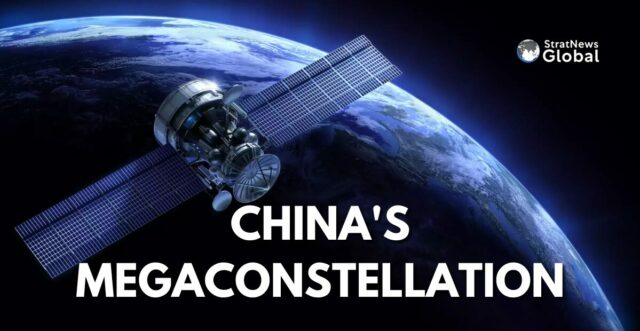On Monday, a Chinese state-owned enterprise launched the first batch of satellites for a megaconstellation designed to rival SpaceX’s Starlink near-global internet network. This launch represents a significant step in Beijing’s strategic goal to establish its own version of the commercial broadband constellation.
Strategic and Military Implications
The launch, led by Shanghai Spacecom Satellite Technology (SSST), took place at the Taiyuan Satellite Launch Centre in Shanxi province. This initiative is part of SSST’s “Thousand Sails Constellation” plan, also known as the “G60 Starlink Plan.” The plan, initiated last year, aims to deploy more than 15,000 low Earth orbit (LEO) satellites.
The competition to occupy Earth’s lower orbits has substantial military implications. Controlling these orbits can influence the balance of power between warring nations. The Chinese government is keenly aware of the potential strategic advantages of having a robust LEO satellite network.
Details of the Thousand Sails Constellation
The “Thousand Sails Constellation” aims to deploy 108 satellites this year and 648 by the end of 2025, with a goal of achieving global network coverage by 2027. The final target is to have 15,000 satellites deployed before 2030. LEO satellites, operating at altitudes of 300km to 2,000km from Earth’s surface, are advantageous due to their lower cost and more efficient transmission capabilities compared to higher orbit satellites.
Comparison with Starlink
Starlink, operated by Elon Musk’s SpaceX, currently has about 5,500 satellites in space and serves tens of thousands of users in the United States. Starlink plans to expand its network significantly. Chinese researchers from the People’s Liberation Army (PLA) have studied Starlink’s deployment, particularly its use in the Ukraine conflict, and have expressed concerns about its potential threats to China’s security.
Concerns and Responses
An op-ed in a PLA mouthpiece earlier this year described Starlink’s deployment as a “serious threat to the security of space assets of various countries.” In response, China’s “Thousand Sails Constellation” is one of three major constellation plans aimed at closing the technological gap with SpaceX.
Future Prospects
SSST’s ambitious plans highlight China’s commitment to becoming a significant player in the LEO satellite domain. The ability to provide near-global internet coverage not only offers commercial benefits but also enhances national security. The success of this project will depend on continued investment and technological advancements.The launch of the first batch of satellites by SSST marks a pivotal moment in China’s space ambitions. By building its own version of Starlink, China aims to secure a competitive edge in the rapidly evolving space industry, with significant implications for global communications and military strategy.
With Inputs from Reuters
Research Associate at StratNewsGlobal, A keen observer of #China and Foreign Affairs. Writer, Weibo Trends, Analyst.
Twitter: @resham_sng





